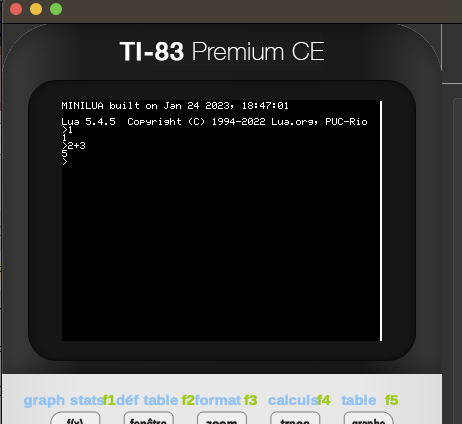Re: À quand KhiCas pour TI-83 Premium CE / Edition Python ?
(Ok apparently it was just due to an old CEmu version, it's fine now)




News, programmes, tutoriaux, forum sur les calculatrices TI !
https://tiplanet.org/forum/


BSSHEAP_LOW ?= D052C6
BSSHEAP_HIGH ?= D13FD8
STACK_HIGH ?= D1A87E
INIT_LOC ?= D1A87F
commandblockguy a écrit:The default data section for apps is not stored in userMem and is substantially smaller than that of a regular program. I forget the exact amount but believe it's under 5 KB. BSS and the stack are still in the same place.
AppVars in RAM can move around, and I believe that the result of os_MemChk does as well, if variables or files are modified.
The stack can definitely be moved around if necessary, though I believe several OS routines have checks for stack overflow that assume that the stack is in the default position.
You could statically allocate memory at userMem, but this requires you to call InsertMem and update asm_prgm_size, and it needs to happen in the crt script before dynamic libraries are loaded. I could probably add an option to app_tools to do this automatically and use userMem for the data section.
In other news, I'm basically done with an installer that's capable of installing much larger apps. At this point it's mostly just figuring out how to integrate it into the build system.